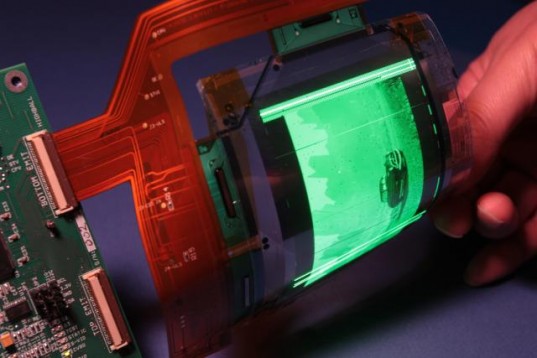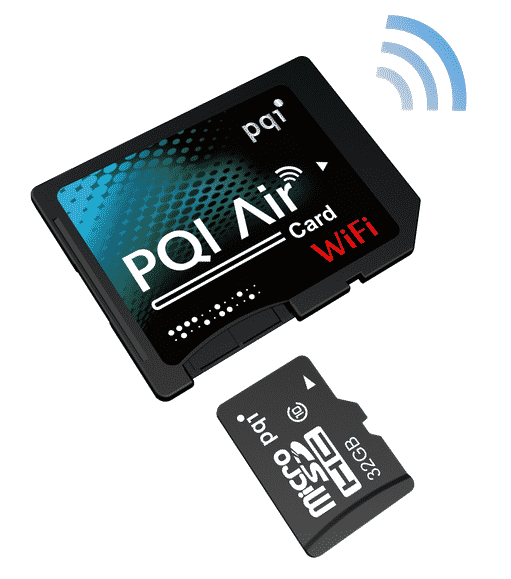The Flexible Display Center (FDC) has been established by U.S Army at Arizona State University in February 2004. The FDC has announced that they have successfully created the world’s largest flexible color Organic Light Emitting Display (OLED). In the past few years, flexible display was confined in the research centers. For the first time, researchers have claimed to make an energy efficient display more durable than glass. Because, advanced mixed oxide Thin-Film Transistor (TFTs) has been used in the time of manufacture. It is measuring 7.4 diagonal inches, the device was developed at the FDC in combination with Army Research Labs scientists.
The mixed oxide TFTs confirm a highly cost-effective approach to manufacture displays that deliver high performance, including vibrant colors, high switching speeds for video and reduced power consumption. Thereto, the mixed oxide TFTs can be manufactured on existing amorphous silicon production lines, eliminating the need for specialized equipment and processing by reducing production costs compared to competitive approaches.
Press Release
The Flexible Display Center Produces Largest Flexible Color OLED Display Manufactured With Mixed Oxide Thin Film Transistors
Flexible Display Achieves Key U.S. Army Milestone; Delivers Vibrant Colors and High Switching Speeds for Video
TEMPE, AZ–(Marketwire – May 30, 2012) – The Flexible Display Center (FDC) at Arizona State University today announced that it has successfully manufactured the world’s largest flexible color organic light emitting display (OLED) prototype using advanced mixed oxide thin film transistors (TFTs). Measuring 7.4 diagonal inches, the device was developed at the FDC in conjunction with Army Research Labs scientists. It also meets a critical target set by the U.S. Department of Defense to advance the development of full-color, full-motion video flexible OLED displays for use in thin, lightweight, bendable and highly rugged devices.
“This is a significant manufacturing breakthrough for flexible display technology,” said Nick Colaneri, director of the FDC. “It provides a realistic path forward for the production of high performance, flexible, full color OLED displays, accelerating commercialization of the technology in the process.”
Mixed oxide TFTs offer a highly cost-effective approach for manufacturing displays that deliver high performance, including vibrant colors, high switching speeds for video and reduced power consumption. Furthermore, mixed oxide TFTs can be manufactured on existing amorphous silicon production lines, eliminating the need for specialized equipment and processing, thereby reducing costs compared to competitive approaches.
“One of the primary directives of the FDC has been to pursue approaches to flexible technologies that take advantage of existing manufacturing processes,” continued Colaneri. “This focus drove us to pursue a flexible, color display based on mixed-oxide TFTs, which are widely regarded as a strong, cost-effective alternative to low-temperature polysilicon. This display showcases the Center’s successful scale up to GEN II, and our ability to produce displays using mixed-oxide TFTs in standard process flows with our proprietary bond/de-bond technology.”
The new, full-color OLED display will be on display in the FDC booth #643 at SID Display Week, June 5-7, 2012 at the Boston Convention and Exhibition Center in Boston, Mass.
Flexible Display Center at Arizona State University
The FDC is a government – industry – academia partnership that’s advancing full-color flexible display technology and fostering development of a manufacturing ecosystem to support the rapidly growing market for flexible electronic devices. FDC partners include many of the world’s leading providers of advanced display technology, materials and process equipment. The FDC is unique among the U.S. Army’s University centers, having been formed through a 10-year cooperative agreement with Arizona State University in 2004. This adaptable agreement has enabled the FDC to create and implement a proven collaborative partnership model with over 26 active industry members, and to successfully deploy world class wafer-scale R&D and GEN-II display-scale pilot production lines for rapid flexible technology development and manufacturing supply chain commercialization. More information on the FDC can be found at flexdisplay.asu.edu.
Source: Marketwire
[ttjad keyword=”electronic”]



It is measuring 7.4 diagonal inches, the device was developed at the FDC in combination with Army Research Labs scientists.